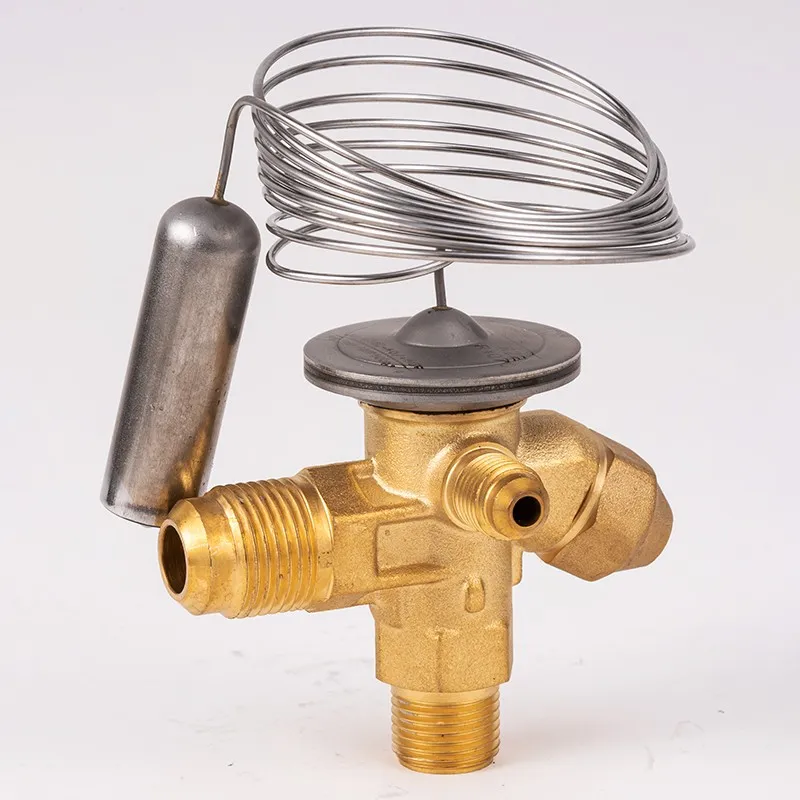
The expansion valve is installed at the entrance of the evaporator. Its function is to eject the high-temperature and high-pressure liquid refrigerant from the liquid storage dryer from the small hole of the expansion valve, reduce the pressure, expand the volume, and convert it into a mist refrigerant. It absorbs heat in the evaporator and becomes a gaseous refrigerant. At the same time, the flow rate of the refrigerant can be adjusted according to the refrigeration load to ensure that all the refrigerant at the outlet of the evaporator is converted into gas.

1. Throttling and pressure reduction: Reduce the pressure of the medium and high-pressure liquid refrigerant from the drying bottle into a low-temperature, low-pressure, and easily evaporable mist refrigerant, which enters the evaporator, that is, separates the high-pressure side and the low-pressure side of the refrigerant.
2. Adjust the refrigerant flow: Due to changes in the refrigerant load and the speed of the compressor, the flow needs to be adjusted accordingly to keep the temperature in the car stable. The expansion valve can automatically adjust the flow entering the evaporator to meet the requirements of the refrigerant cycle.
3. Prevent liquid hammer: Avoid liquid hammer caused by liquid refrigerant entering the compressor, and control the superheat within a certain range.
The temperature-sensing package fixed on the return air pipe is filled with inert liquid as refrigerant. When the outlet temperature of the evaporator is high, the temperature of the liquid in the temperature-sensing package will rise, and the internal pressure will also rise. When the pressure acting on the diaphragm is greater than the sum of the evaporator inlet pressure and the overheat spring force, the needle valve will leave the valve seat, the valve will open, and the refrigerant will flow into the evaporator.
After the needle valve is opened, the refrigerant enters the evaporator, the pressure in the evaporator increases, the return air temperature decreases, the pressure on the lower side of the diaphragm increases, the pressure on the upper side decreases, and the valve closes. Because the pressure on the upper and lower sides of the diaphragm is often in an unbalanced state, it continuously performs an opening and closing cycle.
There are three structural forms of expansion valves, namely external balanced expansion valves, internal balanced expansion valves, and H-type expansion valves.